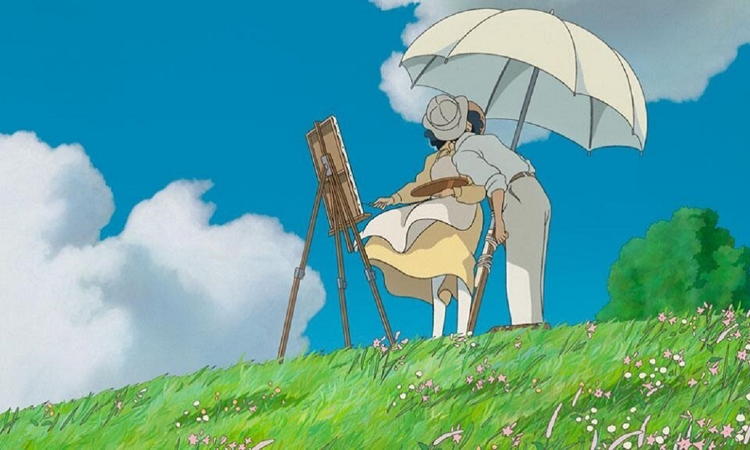By Nguyen Le · March 2, 2014

After the 2001 Oscar win, he becomes the name to know in the Western world. Unlike other creators of drawn wonders, Hayao Miyazaki stays with 2D and proves there’s still plenty of magic in the flatness. That’s why his latest, and last, will reside at a special place within you.
Based upon Miyazaki’s manga and Tatsuo Hori’s short novel, The Wind Rises chronicles the life of Jiro Horikoshi, a man who has a deep passion for airplanes. Though nearsightedness prevents him from piloting one, Jiro is very skilled in designing them, a gift he shared with his idol from Italia called Count Caproni. Eventually, he becomes one of the most talented plane-makers and falls in love with a beautiful girl, Nahoko Satomi. However, Jiro’s life and career will be tested in a Japan that is ailing with the Great Kanto Earthquake, Great Depression, World War II and a tuberculosis epidemic.
What you should know is that the film possesses a different kind of energy – and for that very reason expecting another Princess Mononoke, Spirited Away or Howl’s Moving Castle will result in massive disappointment. Being a fictional biography of a very well-revered individual in Japan (possibly international too), The Wind Rises has to restrain itself from common tropes of animation like a fast-paced plot, no-holds-barred expression of imagination or a rousing soundtrack as the major supporting element. That being said, you shouldn’t turn your back because it doesn’t fit the mold you’ve chiefly been using to define animation. In fact, it’s something that sets Studio Ghibli apart from Disney, Pixar, Blue Sky, Laika and Dreamworks, showing how versatile its films can be not only in content but also approach.
Since the world has to be grounded in reality, the setting is only fantasized in Jiro’s mind. These dream sequences are spectacular on the big-screen, communicating not only the plot but also the theme. You’re left shocked because of how intricately animated they are and you’ll be in awe knowing that it’s not in 3D. For a movie that deals with serious issues about war and human suffering, Miyazaki only touches on them, focusing more on hope and dreams of his characters and those around them. Maybe it’s sentimental to do so, but aren’t the latter products of the former, the elements at the core of all human beings? This here is Miyazaki’s trademark and it’s a mean feat indeed – establishing plenty of gravitas even when the establishment is a painted universe.
Of course, all magic shows need more than just the magician to work. Disney backs Miyazaki up with, right after Howl’s Moving Castle, the best ensemble of voice actors. Again, recognizable names are plenty – Joseph Gordon-Levitt (Inception), John Krasinski (The Office), Emily Blunt (Looper), Stanley Tucci (Easy A), Mae Whitman (Scott Pilgrim) Werner Herzog (Nosferatu) and William H. Macy (Fargo) – but there’s solid evidence of respect for the characters they give souls to. The highlights include understated performances from Levitt and Tucci, as Jiro and Count Caproni respectively, that to my surprise aren’t out of place and Blunt’s beautiful internalizing of lines which could’ve rendered her the sappiest character of the movie. By being less they bring more to The Wind Rises, turning moments that warrant eye-rolls into pure heartfelt ones.
On the subject of less is more, the film shines in smaller moments. Yes, the earthquake sequence is extraordinarily portrayed, but I’m more fascinated by the following silence highlighting two pebbles falling onto each other. It’s the little details that make Studio Ghibli’s films great for me, every of their experience prompting viewers to invest not only their eyes but also ears. To see the smoke and clouds acting like water upon contact, to hear the unusually minimal score from Joe Hisaishi emphasizing an emotion, to notice each individual movements from Jiro as he sets up to work or to listen the metal getting crushed by the wind – every minor thing is thrilling in The Wind Rises. They’re also proof that Miyazaki and his crew at Studio Ghibli know what they’re doing to elevate an animated effort into a seriously well-crafted feature.
Every day you meet and say goodbye to least one person. But when this person is Hayao Miyazaki, safe to say the encounter will be different and there’s a departure to remember. The Wind Rises does just that. Thank you so much, Miyazaki-san.